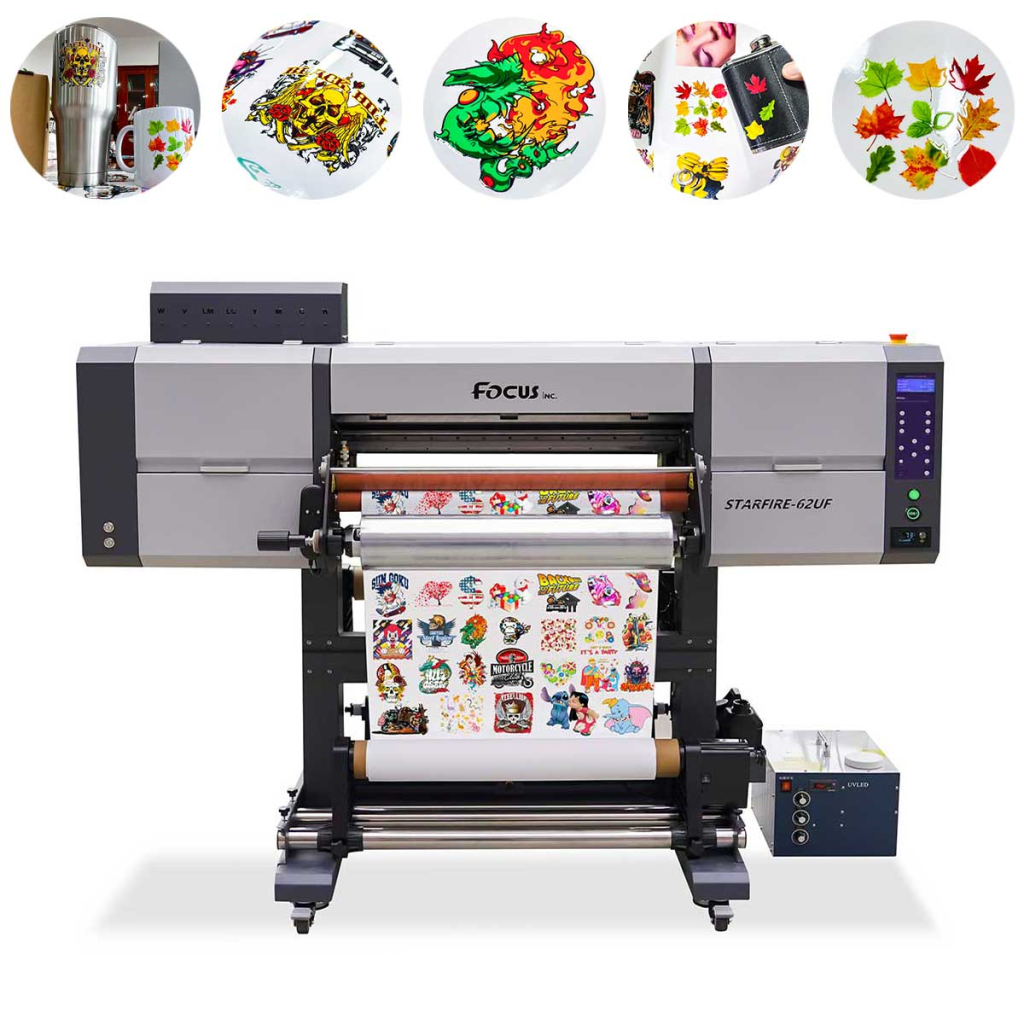UV DTF Gangheet Printing is revolutionizing the world of printing by seamlessly merging the precision of UV printing technology with the versatility of Direct to Film (DTF) printing. As businesses strive for high-quality outputs, this innovative process provides the perfect solution for producing vibrant and durable designs on a wide array of substrates, from textiles to metals. Choosing the right UV printing equipment, including the best printers for DTF, is essential for achieving optimal results and ensuring customer satisfaction. Moreover, utilizing advanced UV inks for gangheet printing enhances color vibrancy and longevity, making your prints stand out in a competitive market. With an efficient setup and the correct heat press for DTF printing, you can increase productivity and meet the demands of a growing clientele.
The process often called Direct to Film UV printing is gaining traction in various sectors, thanks to its ability to produce stunning and long-lasting graphics. This hybrid printing technology combines the strengths of traditional UV printing with DTF techniques, enabling printers to apply intricate designs across diverse surfaces. When embracing this modern approach, investing in high-quality printing machines, such as UV flatbed or dedicated DTF printers, is imperative. Additionally, the selection of optimal inks and proficient heat transfer equipment plays a pivotal role in the efficiency and effectiveness of the production process. Exploring these facets will ensure a robust understanding of how best to leverage UV DTF gangheet printing for exceptional outcomes.
Essential Equipment for UV DTF Gangheet Printing
Investing in the right equipment is the cornerstone of successful UV DTF gangheet printing. A proficient printer can drastically enhance your production capabilities, allowing you to create stunning, high-quality designs on a range of substrates. It’s imperative to look for printers that are compatible with UV inks and DTF technology. This will ensure vibrant colors, resilience, and durability in your products while maximizing your production efficiency and reducing operational bottlenecks.
Moreover, consider selecting printers that feature high-resolution capabilities and rapid printing speeds. These attributes are crucial for meeting customer demands and handling bulk orders without compromising on quality. Additionally, the integration of UV flatbed printers and DTF printers into your setup will provide the necessary versatility for your printing business, enabling you to diversify your offerings and cater to a wider audience.
The Role of UV Inks in Quality Printing
UV inks are pivotal in achieving vibrant and long-lasting prints in UV DTF gangheet printing. The curing process using ultraviolet light enhances the durability of the prints, making them resistant to fading and wear, even when exposed to outdoor conditions. This quality is particularly essential for apparel and promotional materials that need to withstand everyday use while maintaining their visual appeal.
Additionally, the quick-drying nature of UV inks allows for faster production times, ultimately improving turnaround for customer orders. When selecting UV inks, ensure that they are specifically designed for gangheet printing applications to achieve optimal results. By using high-quality inks, printers can consistently deliver stunning visuals that withstand the test of time.
Understanding DTF Printing Technology
DTF (Direct to Film) printing technology complements UV gangheet printing by offering flexibility and efficiency in textile applications. This innovative technique enables printers to transfer complex, colorful designs onto a variety of fabrics seamlessly. By using specialized water-based inks and adhesive powders, DTF technology ensures that prints maintain their fidelity and durability throughout the entire application process.
Moreover, the combination of UV and DTF printing opens up opportunities for businesses to produce personalized and unique products that stand out in the marketplace. As more consumers seek customization in apparel and promotional items, mastering DTF printing technology becomes a competitive advantage for print service providers looking to enhance their offerings.
Selecting the Best Printers for DTF Printing
When searching for the best printers for DTF printing, it’s essential to factor in the printer’s compatibility with both DTF and UV technology. Key features to look for include high resolution, ink efficiency, and speed of printing. These characteristics play a significant role in producing high-quality outputs that meet customer expectations and industry standards.
Additionally, researching popular brands and models that specialize in DTF printers will guide you toward making informed decisions. Reading reviews and analyzing case studies can offer insight into which printers best suit different production needs, allowing print businesses to invest wisely in equipment that enhances their operational efficiency.
Importance of Heat Press for DTF Printing
A reliable heat press is a crucial component in the DTF printing process, indispensable for effectively transferring prints onto textiles. Choosing a heat press that allows for adjustable temperature and pressure settings is vital for ensuring that various substrates adhere correctly without compromising on print quality. This level of control results in professional-looking finished products that meet customer satisfaction.
Furthermore, investing in a heat press with a robust design will enhance durability and stability during production processes. This not only contributes to improved print output but also reduces the frequency of equipment maintenance, thereby allowing your printing operation to run smoothly and efficiently.
Enhancing Workflow with the Right Software
The role of software in UV DTF gangheet printing cannot be overstated; selecting the right design and RIP software can streamline your workflow significantly. Programs that are specifically tailored for color management and print preparation can help in achieving optimal results, particularly when dealing with complex designs or multiple substrate types.
By utilizing software that is compatible with your printer and efficiently handles the intricacies of the DTF process, businesses can maintain high productivity levels while ensuring the prints meet the desired quality standards. Continuous learning about software updates and potential new tools in the market can lead to improved workflows and overall enhancement of your printing capabilities.
Frequently Asked Questions
What is UV DTF gangheet printing and how does it work?
UV DTF gangheet printing combines UV printing technology with Direct to Film (DTF) methodology, enabling the transfer of vibrant, high-quality prints onto various substrates like textiles and metals. This process uses UV inks that cure under ultraviolet light for durability and quick drying, making it ideal for bulk production.
What type of printer is best for UV DTF gangheet printing?
The best printers for UV DTF gangheet printing are UV flatbed printers and DTF printers. UV flatbed printers allow for printing on a wide range of flat materials, while DTF printers are specifically suited for textile applications, ensuring high resolution and speed.
What role do UV inks play in gangheet printing?
UV inks are crucial in UV DTF gangheet printing as they provide vibrant colors and durability. These inks cure instantly under UV light, resulting in prints that resist fading and wear, making them suitable for long-lasting applications.
Do I need a heat press for UV DTF gangheet printing?
Yes, a heat press is essential for UV DTF gangheet printing as it applies heat and pressure to ensure the printed designs adhere properly to fabrics. Look for a heat press with adjustable temperature and pressure settings for varying materials.
How can software compatibility affect UV DTF gangheet printing?
Software compatibility is vital in UV DTF gangheet printing as it allows proper management of design elements and color preparation. Ensure your printer is compatible with design software like Adobe Photoshop or RIP software to optimize your printing workflow.
What ventilation considerations should I keep in mind when performing UV DTF gangheet printing?
Ventilation is important in UV DTF gangheet printing to mitigate health risks from volatile organic compounds (VOCs) released during the printing process. Invest in a reliable ventilation system to maintain safe air quality in your printing environment.
| Key Points | Details |
|---|---|
| Choosing the Right Equipment | Essential for high-quality prints in UV DTF Ganheet Printing. |
| Understanding UV DTF Gangheet Printing | Combines UV printing with DTF for vibrant, long-lasting designs on various substrates. |
| Types of Printers | 1. UV Flatbed Printers: Ideal for flat substrates. 2. DTF Printers: Designed for textiles using water-based inks. |
| Importance of Inks | 1. UV Inks: Provide durability and vibrant colors. 2. Adhesive Powder: Bonds inks to fabric properly. |
| Heat Pressing Equipment | Essential for adhesion. Look for adjustable temperature and pressure settings. |
| Software Compatibility | Compatibility with design software is vital for workflow efficiency. |
| Ventilation Considerations | Proper ventilation is crucial to avoid health risks from VOCs. |
| Post-Processing Equipment | Invest in curing ovens and drying systems for final quality improvements. |
Summary
UV DTF Gangheet Printing is a revolutionary method that combines the efficiency of UV printing with the flexibility of Direct to Film printing, enabling the creation of vibrant and durable designs across various materials. Choosing the right equipment, including the appropriate printers, compatible inks, and reliable heat pressing tools, is pivotal in ensuring high-quality output. Additionally, considerations such as software compatibility and effective ventilation are crucial for maintaining a safe and efficient printing environment. By investing wisely and staying informed about the latest advancements in the industry, print professionals can significantly enhance their productivity and the quality of their products.



